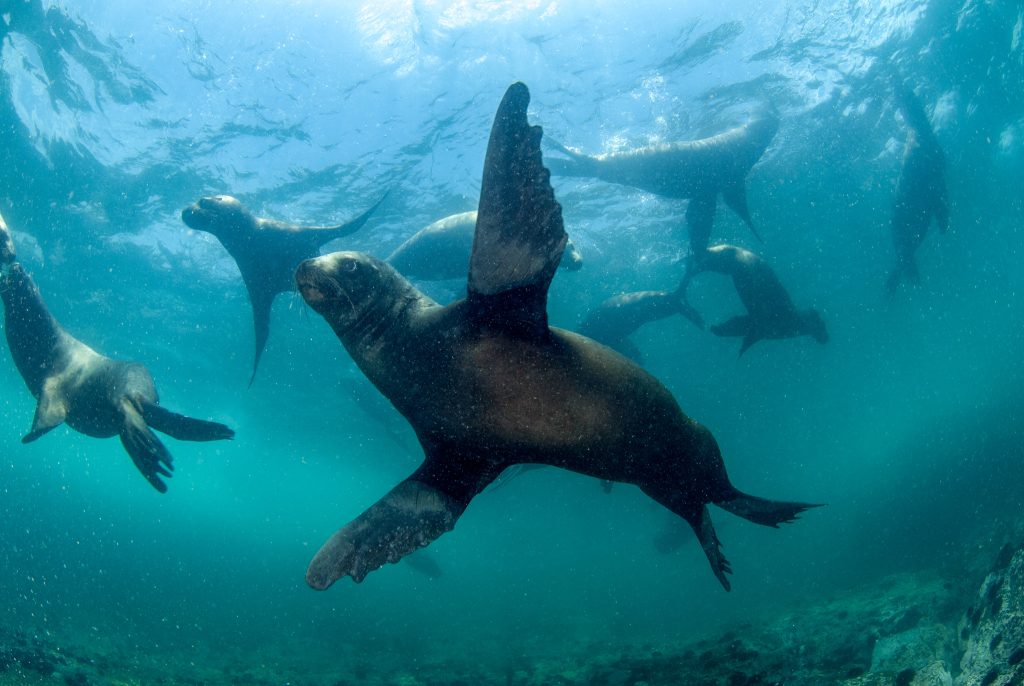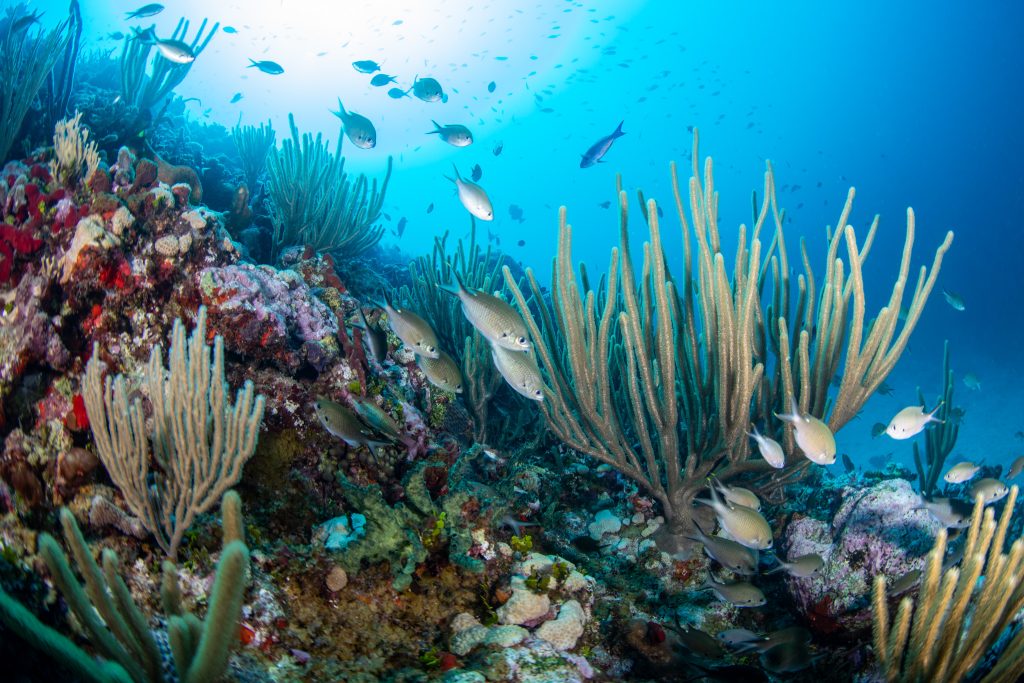
By Antha Williams and James Simon
Antha Williams leads the Environment program at Bloomberg Philanthropies and James Simon is the President of Oceana.
Our ocean is the lifeblood of our planet, filled with extraordinary biodiversity while also playing a pivotal role in helping us fight the climate crisis as the planet’s largest heat and carbon sink. In 2022, the world made a bold commitment to protect and conserve at least 30% of land and water globally by 2030. In the ocean, this ambitious goal, known as ‘30×30’, is essential for preserving marine life and supporting coastal communities. Science also is clear that protecting at least 30% of the ocean – while challenging – is critical to safeguarding the ocean’s ability to act as a climate ally.
To help turn this commitment into reality, the Bloomberg Ocean Initiative and Oceana are working to fast-track the creation of new marine protected areas (MPAs) and other conservation measures that deliver measurable benefits for both people and nature while respecting and recognizing the rights of Indigenous Peoples and local communities.
World Oceans Day is an opportunity to celebrate our partners’ achievements, as well as highlight the progress needed to build a healthy, more resilient ocean for people and the planet.
Recent wins on the path to 30×30
In January, we celebrated the creation of Bajos del Norte National Park by the Mexican government. This new MPA, which spans over 5,000 square miles, is the largest protected area in the Gulf of Mexico. The protected area will help conserve coral reefs and make it easier for groupers, octopus, and spiny lobster populations to recover. Additionally, the MPA connects with the Alacranes Reef National Park, creating a corridor helpful to migrating species such as sharks and turtles. Oceana and Blancpain conducted expeditions to both Bajos and Alacranes to assess the marine life and ecosystems in these areas. The findings and recommendations from the expeditions were key pieces of evidence used to justify the creation of the national park.

The creation of the Humboldt Archipelago multi-use marine coastal protected area by Chile last August was another important moment in the race to protect 30% of the ocean, reinforcing the country’s leadership on ocean issues. Covering more than 2,200 square miles, this MPA, located between the Atacama and Coquimbo regions, is a major win for marine biodiversity. It protects critical ecosystems, including feeding areas for blue whales and Humboldt penguins, while supporting artisanal fishing and eco-tourism. The area also helps recover key commercial species, boosting both ecological and economic resilience. Oceana, artisanal fishers, and other important allies campaigned for this MPA, especially as harmful industrial development projects have attempted to encroach on this diverse ecosystem for years for its mining potential.
In Brazil, our partner Rare also recently supported the creation of two new MPAs off the coast of the state of Pará, adding to the largest continuous belt of conserved mangroves on the planet. These two new protected areas place almost all of Pará’s mangroves, critical ecosystems for marine life and climate change adaptation, under federal protection while ensuring that local communities can still engage in traditional and sustainable practices such as hunting and fishing.
And at this year’s Our Ocean conference in Greece, SkyTruth’s 30×30 Progress Tracker, supported by the Bloomberg Ocean Initiative, was launched. This tool is a game-changer for marine protection, empowering local NGOs and communities to both monitor progress against the 30×30 goal and contribute to national efforts.
The road ahead: more MPAs, stronger protections
Despite these wins, we still have a long way to go to hit the 30×30 goal. The ocean covers over 70% of our planet, yet only about 8% is protected, and sadly only 2% is under strong protection.
Fortunately, the adoption of the High Seas Treaty last year creates a mechanism to protect the two-thirds of the world’s ocean that lies outside of national waters. Once ratified by 60 countries, this landmark treaty will enter into force and enable the designation of marine protected areas on the high seas, something that is critical for the world to meet the 30×30 goal. Seven countries have already ratified the treaty. Many others must rapidly follow suit.
We urgently need governments to accelerate the designation of new MPAs; but just as important is the quality of protection. Currently, many MPAs allow harmful industrial activities, such as bottom trawling, which devastate marine ecosystems and undermine their ability to act as a carbon sink. New research from Oceana shows the extensive damage bottom trawling is causing in European waters, including within MPAs. These huge industrial trawlers drag heavy gear and giant nets across the ocean floor in marine sanctuaries, wrecking habitats and hurting wildlife like turtles and marine mammals.
This is why it’s so important to create strong MPAs. When we do, marine life is able to thrive inside and outside these areas. MPAs don’t just protect wildlife–they also help restore fish populations, which benefits local communities and fisheries. Bigger fish have more offspring, and these often swim beyond the protected zones, spreading the benefits to other areas.
Coastal communities: frontline guardians of the ocean
Protecting coastal areas is also vital. Coastal ecosystems are home to incredible marine biodiversity, capture and store carbon dioxide, protect communities from rising sea levels, and provide food and livelihoods. The Bloomberg Ocean Initiative and Oceana are working with coastal communities in countries such as the Philippines and Brazil to deliver and recognize local marine protections, all the while helping to amplify their voices in national discussions around 30×30.
At its heart, this work is about securing a sustainable future for everyone. Most importantly, to protect 30% of our ocean by 2030, we need global commitment, local action, and strong enforcement. Recent wins like Bajos del Norte National Park and the Humboldt Archipelago AMCP-MU show that progress is possible when we work together. However, we still need to see a step change in the pace and scale of action. The upcoming UN biodiversity conference in Colombia in October will be a key moment for world leaders to show they are serious about protecting the ocean for the sake of wildlife and people everywhere. We will be working to ensure they do not miss it.